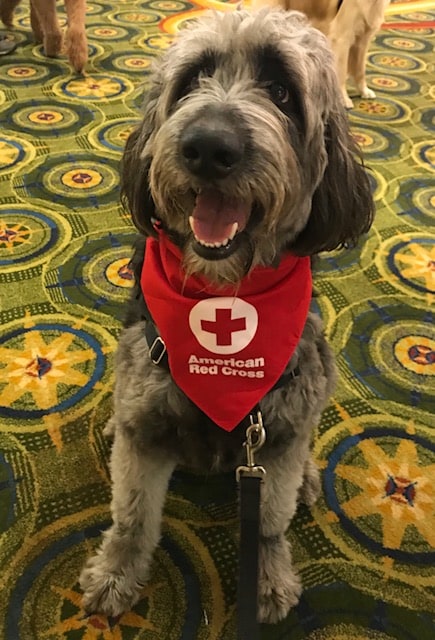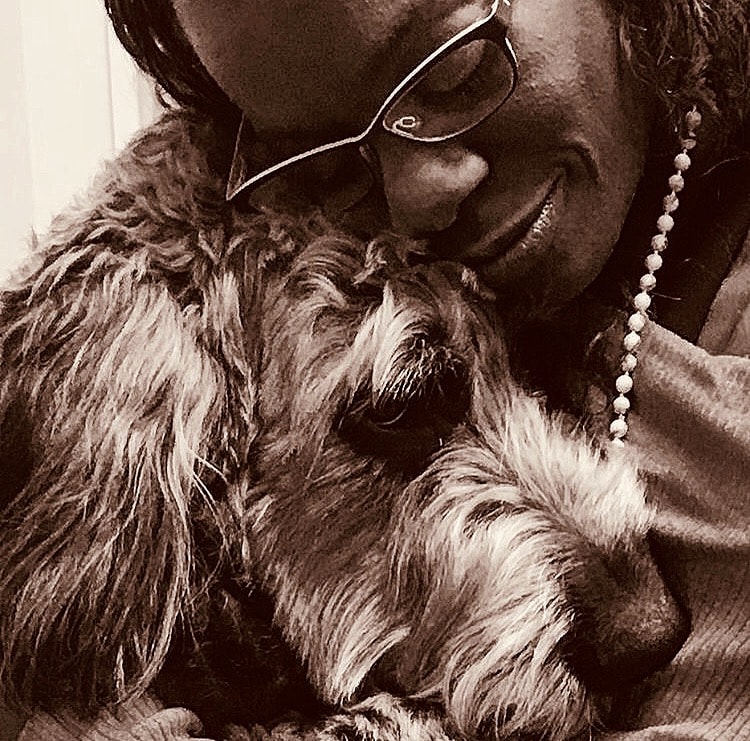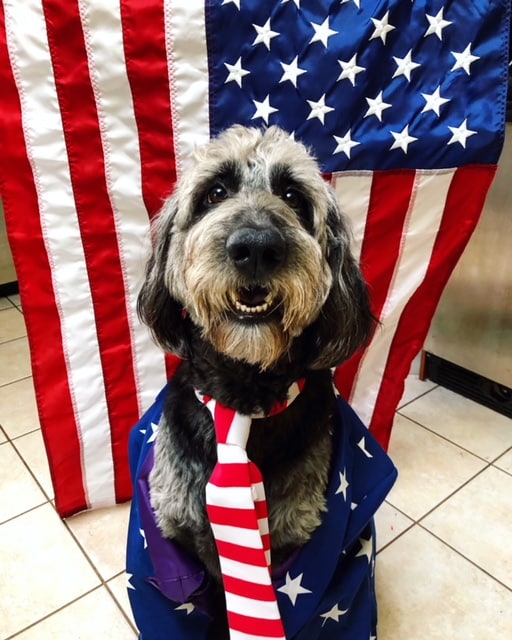Therapy Dogs at Hudson Valley Paws for a Cause Offer Stress Relief for the Military and Their Families
Photo courtesy of Paws for a Cause
By Nancy Dunham
No one can return Vivian Allens’ son to her, but volunteering to work at events with therapy dogs allows her to keep his memory alive.
Allen is the mother of fallen New York National Guard First Lt. Louis Allen, who died in 2005 after he was deployed to Iraq. The Gold Star mother volunteers to help with administrative and other similar duties for Hudson Valley Paws for a Cause, which works with military members and their families at The United States Military Academy at West Point, New York.
This all-volunteer, nonprofit pet therapy organization is perhaps the only one of its kind that uses therapy dogs to provide comfort to members of the military and their families during stressful times.
How It Began
The force behind Paws for a Cause is Judy Audevard, who in 2011 founded the organization that provides therapy dog services in New York and Connecticut. The pet therapy group grew slowly from six to more than 70 volunteers, the majority of which are registered dog/handler pet therapy teams. All Paws for a Cause volunteers are registered Red Cross Volunteers.

Photo courtesy of Paws for a Cause
The Paws’ website details how clinical studies have found that interacting with animals can improve human lives, especially those undergoing physical and emotional challenges. All it takes are a few pets on the back or nuzzles to help lessen stress. Paws for a Cause teams visit those in hospitals, nursing homes, schools and community centers to offer their services.
Yet the work done with military members and their families at West Point, and at deployment and yellow ribbon ceremonies, warrior games and other military events, is what sets it apart from other therapy dog programs.
Working With Members of the Military
“As Red Cross volunteers, we have opportunities most people don’t,” says Audevard. “We have a real chance to help serve people that wouldn’t otherwise have access to emotional therapy dogs. And much of that comfort occurs by letting the ‘dogs be dogs,’” says Audevard.
Although the dogs work high-profile events, such as deployment, they also help members of the armed forces and their families face less stress during everyday activities.
“[Military veterans] need help to kind of reenter their lives, and the government and the Red Cross provide classes to help them. They learn how to get a job, how to get insurance and other living skills,” she says. “If you leave when your child is five years old and come home two years later… that’s a big change. So we act as a therapy group, helping them de-stress.”
Many new members of the military don’t have a wealth of life experience, so the dogs help with that, too.
“The cadets are required to give blood, and some of them are very, very scared. They are young and they’ve never done that before,” says Audevard. “We’ve seen some have blood pressure so high they couldn’t give blood. After a few minutes petting the dog, their blood pressure is normal.”
Providing Comfort to Those in Need
Volunteers Kathy and Bud Schuck of Walden, New York, began to volunteer for Paws about four years ago. They currently have three therapy dogs, including Ivy Grace, 6, a white Golden Retriever who was permanently injured when she was hit by a car.
“Ivy is very empathetic,” says Bud Schuck. “She knows who wants hugs.”
That was made clear one day when Ivy and Kathy were working and the dog suddenly began to pull on her lead. Kathy was surprised to find a blind woman who wanted to pet Ivy.
“It’s amazing to watch how much comfort these dogs bring people,” says Bud Schuck. “That’s especially true when we go to deployment ceremonies. It’s very moving to be able to offer some comfort to those young people going overseas.”
Working With Military Families
Robert Reeg of Stony Point, New York, joined Paws in 2013 after watching therapy dogs interact at Wounded Warrior events. He was so impressed with how the military members related to the dogs that he had his dog Hunter, a standard Poodle, trained as a therapy dog. Now, Reeg and Hunter volunteer their time with Paws to help military members and their families.
“The kids—some of them are terrified when they first start. They won’t go near the dogs,” says Allen of the interactions she’s seen between special needs children of members of the armed forces and the dog/handler teams. “The way the handlers interact with kids and introduce them to the dogs [comforts and calms the children]. They start to love them and hold them.”

Photo courtesy of Paws for a Cause
One of the most poignant stories Reeg tells is about the young son of a military member he met at West Point. The boy, who was about 5, was very afraid of Hunter.
“He wouldn’t come near us, even though his sister was completely unafraid,” says Reeg. “It took several months, but soon he was petting Hunter, and soon he was [helping me] walk him. It was just great to see. Hunter is very intuitive. He can tell the difference between a child who is injured and a child who wants to have fun.”
Reeg and Hunter have bonded so fully with members of the military that they often work with them outside of Paws events. Reeg and Hunter accompanied a wounded warrior and his mother to New York to see the National September 11 Memorial and Museum in New York.

Photo courtesy of Paws for a Cause
“That was a particularly happy occasion,” says Reeg. “And Hunter knows how to make people relate to him. He’ll often go over and nudge a wounded veteran.”
